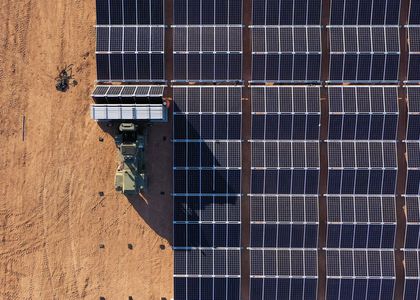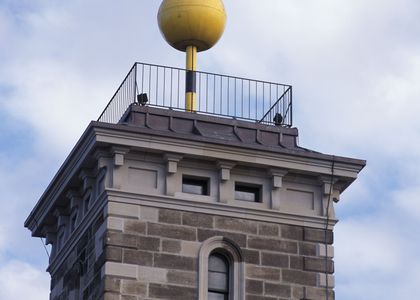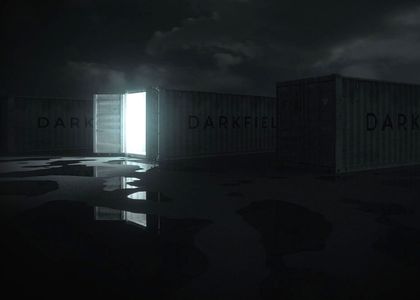The calendar we use in civil society (the ‘Gregorian’ calendar) is a solar one – based on the time it takes for the Earth to orbit the Sun. Many religious calendars, however, are based (or partly based) on the phases of the Moon. These include the Catholic, Jewish and Islamic religious calendars. The dates of festivities, holidays and important events in the lunar calendar move by about 10 days every year within the Gregorian calendar.
The ninth month of the Islamic calendar, known as Ramadan, is the Islamic month of fasting. The Hilal, or crescent moon, marks the beginning of the fasting period. However, there are differences of opinion on how to determine the visibility of the crescent moon. There are traditional methods for determining when the crescent should be first visible. However, some observers require an unaided sighting by eye of the crescent moon while others lean towards using astronomical calculations for assistance.
The following astronomical data concern the timing of new moons and the first visibility of the crescent moons in March and April of 2023 for Australia.
The simplest useful criterion is the lagtime, or difference, between sunset and moonset. If that time is greater than 47 minutes (at the latitude of Sydney) the crescent moon should be visible to the unaided eye after sunset and before the setting of the Moon.
The most common method of prediction, however, is to use a scheme developed by Dr Bernard Yallop of HM Nautical Office and proposed in 1997. This scheme or algorithm involves the altitude difference between the Sun and the Moon; a calculated ‘best time’ to view the Moon; and the width of the crescent. The Yallop method is applicable to any location. More details of this method and maps displaying the Moon’s visibility are available here.
Please note that all dates & times in this article are for Sydney, unless otherwise stated, and they are in Australian Eastern Daylight Time (AEDT) or Australian Eastern Standard Time (AEST), i.e. Sydney time, as appropriate. Please note that Daylight Saving ends on Sunday April 2 at 3am.
The New Moon in March 2023
The new moon in March 2023 will occur at 4:23am AEDT on Wednesday March 22nd. On March 22 the Sun will set at 7:05pm AEDT and the Moon will set at 7:31pm AEDT. The lagtime is only 26 minutes so the crescent moon will not be visible to the unaided eye at Sydney’s latitude, and the Yallop method concurs. Further, the Yallop method provides a more detailed picture for Australia for March 22: if you are north & west of a line joining (approximately) Carnarvon (WA) to Weipa (Qld) the crescent Moon may be visible with binoculars or telescopes, but not to the unaided eye (even after locating it with binoculars or a telescope). To avoid irreversible eye damage please ensure the Sun has fully set before searching the western horizon for the crescent moon with your binoculars or telescope. South & east of that line the crescent Moon will not be visible after sunset on March 22.
On Thursday March 23 the Sun will set at 7:03pm AEDT and the Moon will set at 8:00pm AEDT. The lagtime is now 57 minutes and the crescent moon should be visible (at Sydney’s latitude) to the unaided eye if the western sky is clear of cloud. The Yallop method concurs. Further, the Yallop method shows that the crescent moon should be visible to the unaided eye from all locations in Australia after sunset on March 23.
In summary, on Wednesday March 22 the crescent Moon may be visible (but only if using binoculars or a telescope after the Sun has set) from Australia if you are located north & west of a line joining (approximately) Carnarvon (WA) to Weipa (Qld), but from all other locations in Australia it will not be visible even with binoculars or a telescope. On Thursday March 23 the crescent moon should be easily visible to the unaided eye from all locations in Australia after sunset.
The New Moon in April 2023
The following new Moon occurs on Thursday April 20 at 2:12pm AEST (Daylight Saving ended on April 2). On the evening of April 20 the Sun will set at 5:27pm AEST and the Moon will set at 5:28pm AEST. The lagtime is just 1 minute so the crescent moon will not be visible to the unaided eye (at Sydney’s latitude), and the Yallop method concurs. From all other Australian locations the crescent moon also will not be visible.
On Friday April 21 the Sun will set at 5:26pm AEST and the Moon will set at 6:00pm AEST. The lagtime is now 34 minutes so the crescent moon will not be visible to the unaided eye at Sydney’s latitude, and the Yallop method concurs. Further, the Yallop method provides a more detailed, although complex, picture for Australia, as follows…
- On Friday April 21 if you are north & west of a line joining (approximately) Carnarvon (WA) to Townsville (Qld) the crescent Moon should be easily visible to the unaided eye.
- On Friday April 21 if you are south & east of the above region (ie. of the line joining Carnarvon to Townsville), but also north & west of a line joining (approximately) Augusta/Cape Leeuwin (WA) to Byron Bay (NSW) the crescent Moon may be visible to the unaided eye under perfect atmospheric conditions, i.e. no cloud, no dust and a very clear western horizon.
- On Friday April 21 if you are south & east of the above region, but also north & west of a line joining Kingston (south of the Coorong, SA) to Batemans Bay (NSW) (note: this region includes the far southern coast of WA, including Albany and Esperance) the crescent Moon may be visible to the unaided eye but only after being found with binoculars or a telescope. To avoid irreversible eye damage please ensure the Sun has fully set before searching the western horizon for the crescent moon with your binoculars or telescope.
- On Friday April 21 if you are south & east of the above region, but still on mainland Australia, the crescent Moon may be visible but only with binoculars or telescopes. To avoid irreversible eye damage please ensure the Sun has fully set before searching the western horizon for the crescent moon with your binoculars or telescope.
- On Friday April 21 if you are anywhere in Tasmania or the islands of Bass Strait the crescent moon will not be visible.
On Saturday April 22 simplicity returns and the crescent moon should be easily visible to the unaided eye from all parts of Australia.
Other locations
If you are not in Sydney but your latitude is within a degree or so of Sydney’s latitude then the lagtime method of 47 minutes should work sufficiently well for you – but you will need to find the time of sunset and moonset for your particular location.
For Melbourne we can provide the following additional information: At the moment of sunset on March 22 the Moon will be at an altitude above the horizon of 4.3-degrees and it will be 6.5-degrees to the right of the Sun, i.e. from the point where the Sun set look 6.5-degrees to the right then 4.3-degrees up to find the crescent Moon. On March 23, again at the moment of sunset, the Moon will now be at an altitude above the horizon of 9.4-degrees and about 18.8-degrees to the right of where the Sun set.



Much appreciated.
Thanks for the article. Very informative.
I offer my gratitude and appreciation to the writer of this valuable scientific information which help thousands of muslims living in this beautiful country ( Australia) during the two months of ramadan and shaban
Thanks Andrew like previous years your informative article is very helpful for the community God bless you Abid
Hi Andrew, amazing info re visible crescent. So beautiful information and assistance for those who love to follow the Sunnah of the Holy Prophet (pbuh). Thank you.
Was a bit worried with missing blog when I checked it during first week of March 2023. Hope Sydney Observatory continues this community service in years to come.
God bless you.
A very informative article Andrew. Thank you.
I note your comment that the Catholic calendar is based on the phases of the moon. This is certainly true, of course, for its temporal cycle: the annual progress of Lent, Easter and Pentecost. However its sanctoral cycle, the yearly round of saints’ days, is firmly grounded in the 365-day Gregorian calendar. The Catholic liturgical calendar is thus really a hybrid lunar/solar one.
Roberto, that’s a good point. Thank you. For simplicity here I have made a small update to the introductory information above. [added ‘(or partly based)’].
Dear Andrew, many thanks for this excellent analysis. I wait every year for the detailed moon crescent sighting review from the Sydney Observatory. Wishing you and everyone at the Observatory all the peace and blessings of Ramadan.
Salaam (Peace) Andrew! Many thanks for your article, I was eagerly awaiting it! I have been following this for years, may be a decade and can’t thank you enough. The Almighty has blessed you with sound knowledge in this domain and I am glad you are helping the community with it.